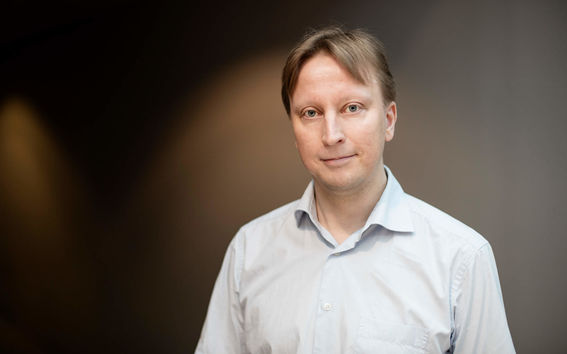Simo Särkkä: Sensor data guides robots and helps with care of premature infants

Professor Simo Särkkä, what do you research and why?
I lead the Sensor Informatics and Medical Technology research group. Sensors are generally small measuring instruments and nowadays they can be found almost everywhere: in buildings, clocks, phones, cars, and so on.
There are typically multiple sensors in a device, and they therefore produce contradictory and noisy data. Our task is to model the data so that we can obtain a clear overall picture from it. This picture, for example, allows a robot to know what kind of environment it is in, or a self-driving car to report where on the road it is currently located.
One of our most important areas of application is medical technology. For example, we have worked with Helsinki University Central Hospital to improve the care of premature infants. The hospital unit uses sensors to collect data on, for example, the breathing, oxygen saturation, and heart rate of premature babies. The data is used to produce models that allow doctors to react more quickly to any changes in the condition of premature babies that require actions to be taken.
How did you become a researcher?
Signal processing has always fascinated me, as has measuring and mathematics. After graduation, I worked in industry on research tasks, and I started my doctoral dissertation alongside my work – until I finally returned to full time research.
What have been the highlights of your career?
Completing my doctoral dissertation was certainly one highlight. The dissertation dealt with stochastic differential equations, which are the mathematical models upon which sensor signal processing is based. I am also proud of the books I have published, of which many are used for teaching in the field.
What is required from a researcher?
Above all, patience. Things started today are not ready tomorrow. Ideally, a publication can be produced in a year, but the journey from research to application can easily take ten years, even in the electronics field – and in medical technology even twice as long as this.
What do you expect from the future?
I hope that our research will help to make sensors a more central component of more and more fields of work. Challenges remain in communication between sensors, and solving these problems is an important part of, for example, the development of self-driving vehicles.
In medical technology, we are working on improving, for example, treatment of heart diseases. Some heart problems can be easily detected with a single measurement, but often measurements are needed over a longer period of time. In this, a key role is played by sensors and the processing of the data they produce.
Simo Särkkä and Aalto’s other new tenured professors will speak about their research at the Installation Talks event on 30 October. The presentations are presented in non-technical language and are open to all. See you there! Further information is available here.
Read more news

Unite! Seed Fund 2026: Open for applications
The 2026 Unite! Seed Fund call is officially open, offering funding across three strategic lines: Student Activities, Teaching and Learning, and Research and PhD. Deadline for applications is 20 March 2026.
Apply now: Unite! Seed Fund 2026 - Student Call
The Unite! Seed Fund call for 2026 is now open for students. Apply now for up to €20,000 per project, involving at least two Unite! Universities. Deadline for applications is 20 March 2026.Create your CV easily with the Research.fi profile tool
Aalto University’s researchers can now create a CV using the CV tool in the Research tool service. The tool generates an editable Word CV based on your Research.fi profile information, following the official TENK CV template.






